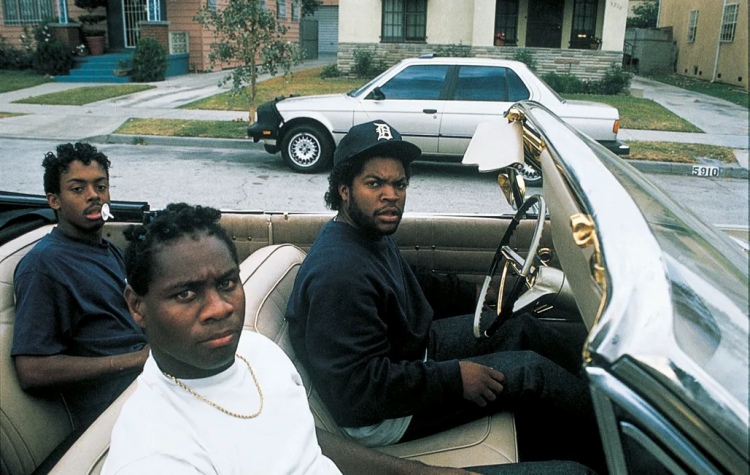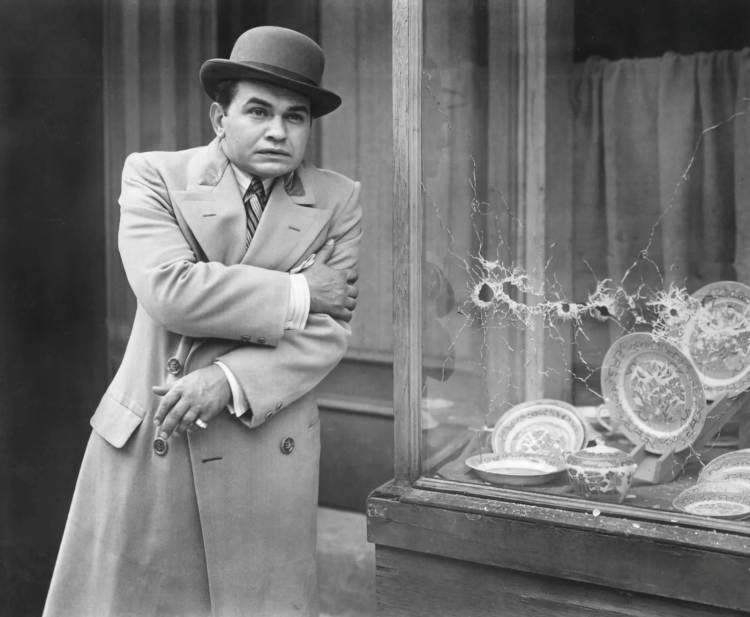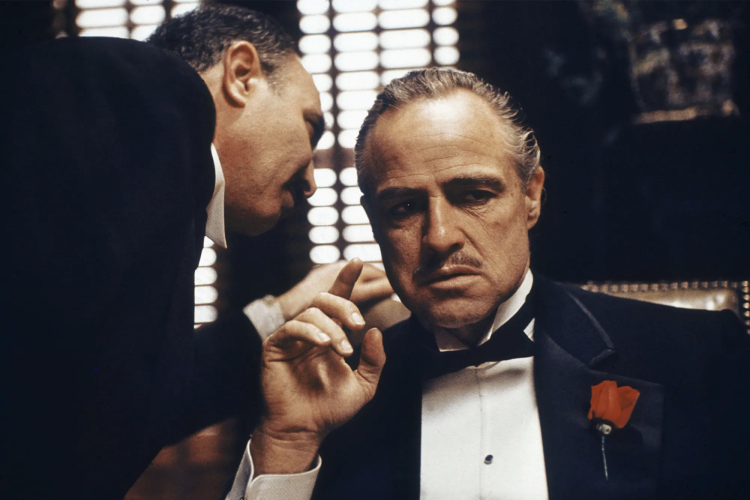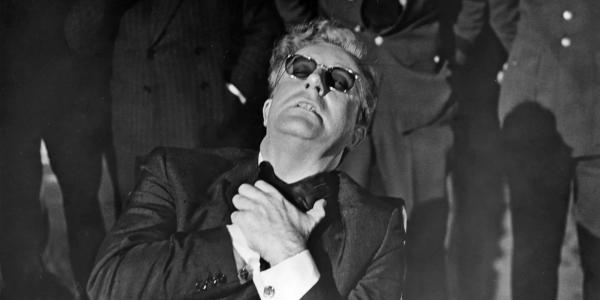In honor of what would have been Al Capone’s 125th birthday, CU Boulder cinema researcher Tiel Lundy explains the enduring popularity of gangsters in film and the American imagination
What is the most quintessentially American genre of film?
Some might argue for the Western, but there also is a case to be made for the gangster film, says Tiel Lundy, associate teaching professor with the University of Colorado Boulder Department of Cinema Studies and Moving Image Arts. Lundy should know—she’s been teaching a class on the portrayal of gangsters in film for almost 10 years as part of the Libby Hall Residential Academic Program (RAP), recently rebranded as Creative Minds RAP at Libby.
Movies about gangsters date back to the early days of modern motion pictures, and hundreds of them have been made over the years. In fact, following the success of the first recognized gangster film, Little Caesar, in 1931, starring Edward G. Robinson as a small-town mobster rising through the ranks of organized crime, Hollywood made more than 50 gangster movies the following year.

Tiel Lundy, a CU Boulder associate teaching professor in the Department of Cinema Studies and Moving Image Arts, teaches a course on the portrayal of gangsters in film.
With this month marking the 125th anniversary of the birth of America’s most famous gangster, Al Capone, Colorado Arts and Sciences Magazine asked Lundy about the continued popularity of the genre, how it has evolved over the years and what makes for a good gangster movie. Her responses have been lightly edited for style and condensed for space considerations.
Question: Given how many gangster films have been made, it seems fair to say the genre is popular with Hollywood producers.
Lundy: It is. And I think that, much like the genre of the Western, there’s always a question about gangster movies amongst film scholars: Does it continue to be viable, or has it pretty much reached its terminus? But just when people want to pronounce it dead, it finds its next incarnation.
I have some thoughts as to why it remains a really enduring genre. From its beginnings, the gangster film is an American cinematic invention. Other national cinemas have adopted it and riffed on it, but it is an American genre, and the genre itself really was contemporaneous to the history of gangsters in America, like Al Capone. I think that’s part of what explains its continuing appeal—that it’s rooted in actual history. I also think the gangster, as this mythic figure, is kind of the embodiment of this American identity.
Question: It seems like early gangster films focused on Italian-American or maybe Irish-America mobsters, but later films have broadened to represent greater American diversity.
Lundy: You’re definitely touching on something that is core to the genre. The genre is about American identity. And you can’t extricate race and ethnicity from American identity just because of the sort of unique nature and way this country has come together and continues to evolve. So, early films from the 1930s reflected the immigration patterns of the day. If you look at the late 19th and early 20th century, many of the immigrants were coming from southern Europe, and from Italy in particular.
As our questions about American identity become refined and maybe more focused on second- and third-generation Americans, I think they start to become less concerned with immigration status and ethnicity and really more at the intersection of race and class. I’m thinking now about Boyz n the Hood, for example. That is not the classic rise-and-fall story. That is a story that condemns racism and the failures of democracy and capitalism.
If you look at other films that are slightly more recent, for instance, The Departed, they do look at ethnicity, but I think their focus is really more on capitalism.
Question: Do you have any thoughts on Hollywood’s treatment of perhaps America’s most famous gangster, Al Capone?
Lundy: The obvious two films that we would look to would be the original Scarface, by Howard Hawks, and then the remake from 1983 from director Brian De Palma. And they’re remarkably similar in the way that they depict Capone, or in this case, ‘Tony.’ Tony Camonte is the name of the character in the original movie and Tony Montana is the remake with actor Al Pacino's character.
What I think they share between the two depictions, as well as the actual Al Capone, is that this man who is very aware of his presentation publicly and who really has worked to craft a kind of persona and public image of himself. And that’s my understanding as to part of why Al Capone has lived on in our memory, because he was a very good kind of social promoter—almost like an influencer of his day. The gangster’s identity has everything to do with how the public sees him, so he goes to great lengths to create this kind of mythic, larger-than-life impression in the press and popular culture.

John Singleton's 1991 film Boyz n the Hood condemned racism and the failures of democracy and capitalism. (Photo: Columbia Pictures Industries, Inc.)
Question: Movie-wise, it seems like the American gangster has gone through several incarnations over the years.
Lundy: You’re right, there are definitely different iterations. And those iterations are a function of the release date of the film as well as when it’s set. They also are very much impacted by censorship.
If you look at the bulk of what we call the classic cycle of gangster films—those films that come out from the mid-1930s to the late 1940s and early ’50s—the content of those and the depiction of the gangsters was strongly enforced by the Hollywood Production Code.
The writers and directors were always somewhat hamstrung by the demands of the Hayes Office and the Production Code. If you were to try and really abide by the letter of the law, you couldn’t have a gangster that was flouting the law or remained sympathetic … because then you are creating a figure who doesn’t exemplify proper values. But, of course, that also makes for a really boring gangster.
So, the directors were always trying to find a way to kind of thread that needle to create a gangster who was charismatic, and was interesting, and who satisfied audiences’ craving for criminality and ruthlessness—but at the same time, that they could get it past the censors and release their films.
So, up until Bonnie and Clyde from 1967, movies were very much informed by the restrictions of the Production Code. By the time you get to Bonnie and Clyde, you have a different set of parameters, and a little bit more latitude as far as how to depict these gangsters.
Question: Prior to the Production Code, it seems like Hollywood romanticized gangsters a bit, but after the code Hollywood turns its attention to romanticizing law enforcement, correct?
Lundy: During the Great Depression, there was a feeling of disenfranchisement and dissatisfaction with American institutions, and that’s really embedded in gangster films at the time. They (gangsters) are there to challenge those institutions like banks and other institutions that were seen as utter failures that had let people down.
So, in the 1930s the gangster was most certainly romanticized. Those gangsters had qualities that made them more sympathetic to audiences and they had certain vulnerabilities.

Edward G. Robinson starred in Little Caesar, considered the first gangster film. (Photo: Museum of Modern Art Film Stills Archive)
Once we get into the official Production Code era, after 1934 until about the end of the 1940s, that 15-year or so period is when the Production Code was enforced most vigorously, and as a consequence the gangsters became less romanticized because the code was leaning hard on the studios to make gangsters less sympathetic and make law enforcement more sympathetic.
Question: With the enforcement of the Hollywood Production Code, it seems like movie gangsters were predestined to end up dead or in prison by the end of the movie.
Lundy: Exactly. You could have a gangster committing crimes, but ultimately, he had to be punished for them. So, that’s why you have movies like Little Caesar and Scarface and Public Enemy, where the gangster always goes out in a hail of bullets. He’s effectively ‘punished’ by dying. But it’s a very dramatic, spectacular death that satisfied audiences craving for that kind of action and violence and drama.
Question: Besides being focused on gangsters, are there some general unifying themes in this genre of film?
Lundy: What those movies—especially The Godfather and Scarface—have in common is this ongoing central theme about social mobility in America and the kind of tension between the gangster wanting to move up the social ladder and acquire a certain kind of class respectability—but at the same time never wanting to really fulfill that social contract. He wants to get to the top, but he wants to find the shortcut way to get there.
I think that’s common to some extent across American gangster films. They express that tension between wanting to be accepted in the highest levels, maybe even have political capital, but be able to commit crimes with impunity.
I’ve been thinking more about this recently, and I think that explains why this genre continues to remain vital: It’s pretty hard-baked into the American consciousness, that tension between being a renegade and also wanting to do your part so that we can have a functioning society.
Question: With so many gangster films to choose from, how do you narrow down the list of ones you will focus on in class to a manageable level?

Marlon Brando (right) starred as Don Vito Corleone, the titular godfather, in The Godfather. (Photo: Paramount)
Lundy: Basically, that’s what goes into shaping the syllabus. What can we do in about 14 weeks? If this is the only time that a student is going to watch gangster films, what are the ones they absolutely must see? What are the films that express those key turning points in the genre that express the central conflicts and themes?
I always know where the starting point is going to be. It's going to be the first film, Little Caesar. I don’t always know what the last, most recent film is, because I always move chronologically. But there are always going to be some films that that will never go away, like The Godfather. I would be drawn and quartered by my colleagues if I taught a gangster class and left out The Godfather.
Question: Is there anything specific that you think makes for a good gangster film?
Lundy: Beyond the technical effects, I think what the most endearing films have in common is the scope of the story. These are master narratives with sweeping stories that cover decades in a family’s story. I think that, in part, that’s why The Godfather trilogy is such a favorite.
Movies like The Godfather and Goodfellas offer really broad, sweeping narratives. I think why they work so well and are so appealing is that, with that kind of scope, they can really engage in questions about America and American identity that is always going to be core to the gangster genre. It’s always going to be interrogating Americanism and the promises of America.
Maybe my answer is not so much what makes for a ‘good’ gangster film, but what makes for the most enduring and popular gangster films for American audiences.
Top image: scene from Howard Hawks' 1932 film Scarface, starring Paul Muni (center) as Tony Camonte. (Photo: Bettman Archive)
Did you enjoy this article? Subcribe to our newsletter. Passionate about cinema studies and moving image arts? Show your support.



